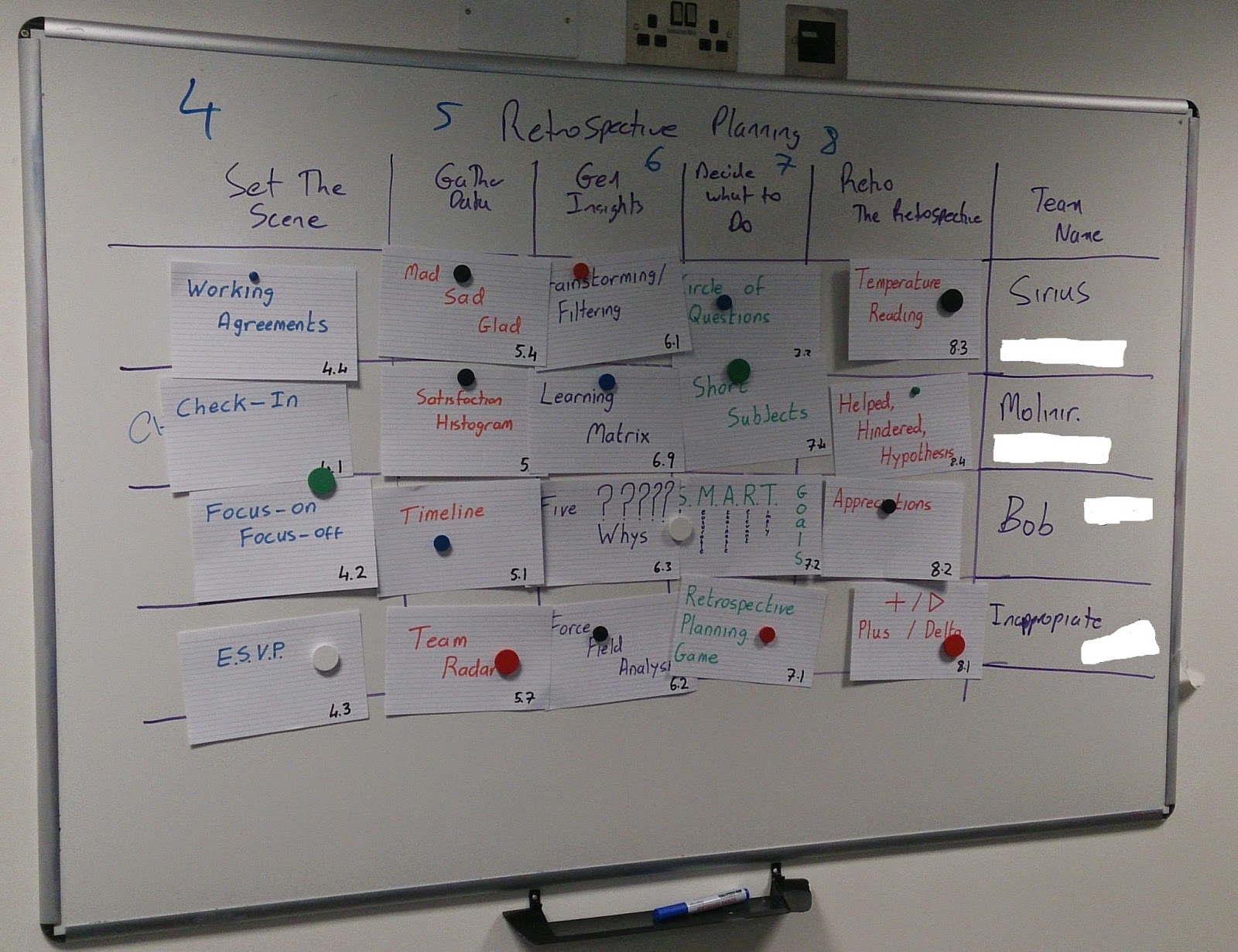There is no other tool with as low a competence barrier for use as the whiteboard. Whether you are the CEO or the technology expert, old or young, rich or poor, chances are you have basic writing and drawing skills. This means you can use a whiteboard.
The whiteboard is a great aid to the creative process. You don't have to go searching for the "right" icon or diagram. There's no chance of it crashing just at the eureka moment. Its always on. It's easy undo/change the diagram. Its easy to save (take a photo using your phone!).
Plus its a great break from just sitting around the computer on the desk.
In my opinion, one of the things a scrum master has to do is get their team using the whiteboard effectively. The following tips are vital
Guidelines
Make sure the whiteboard is near the team. Preferably right beside. Preferably only for use by your team. Unrestricted and easy access are vital.
A clean whiteboard is an invitation to the team for content. Make sure the whiteboard is always clean. If no one is using the whiteboard at that moment in time, it must be clean. . There are two ways you can achieve this. Firstly have a rule in your team to always wipe the whiteboard after they are done. And at the end of the day or start of the day, clean down the board yourself. Never tolerate those that write "Do not erase". Erase immediately.
Fully equip your white board: Make sure you personally source: Markers (various colors), Magnetic eraser and white board cleaning fluid or spray. Daily check the white board for markers and that it is clean.
Practice with your team: It can be daunting to start using the whiteboard for some team members, even though they have the basic skills. Take time to help your team to articulate their ideas on the board.
Practical advice
I favour metallic based whiteboards. These tend to have a higher quality surface. From time to time, magnets are useful for planning with index cards etc.
Communication advice
Team need a common language to understand each others drawing. For me, working with mainly Java and OO based teams, its mainly UML diagrams (class, object, sequence diagrams. I can recommend "UML for Java Programmers" by Uncle Bob. Flow diagrams are also useful for algorithmic solutions. And there's always free form diagramming - come up with your own representations, just be sure to explain it to the rest of the team what the boxes and arrows represent!
Happy white boarding.


